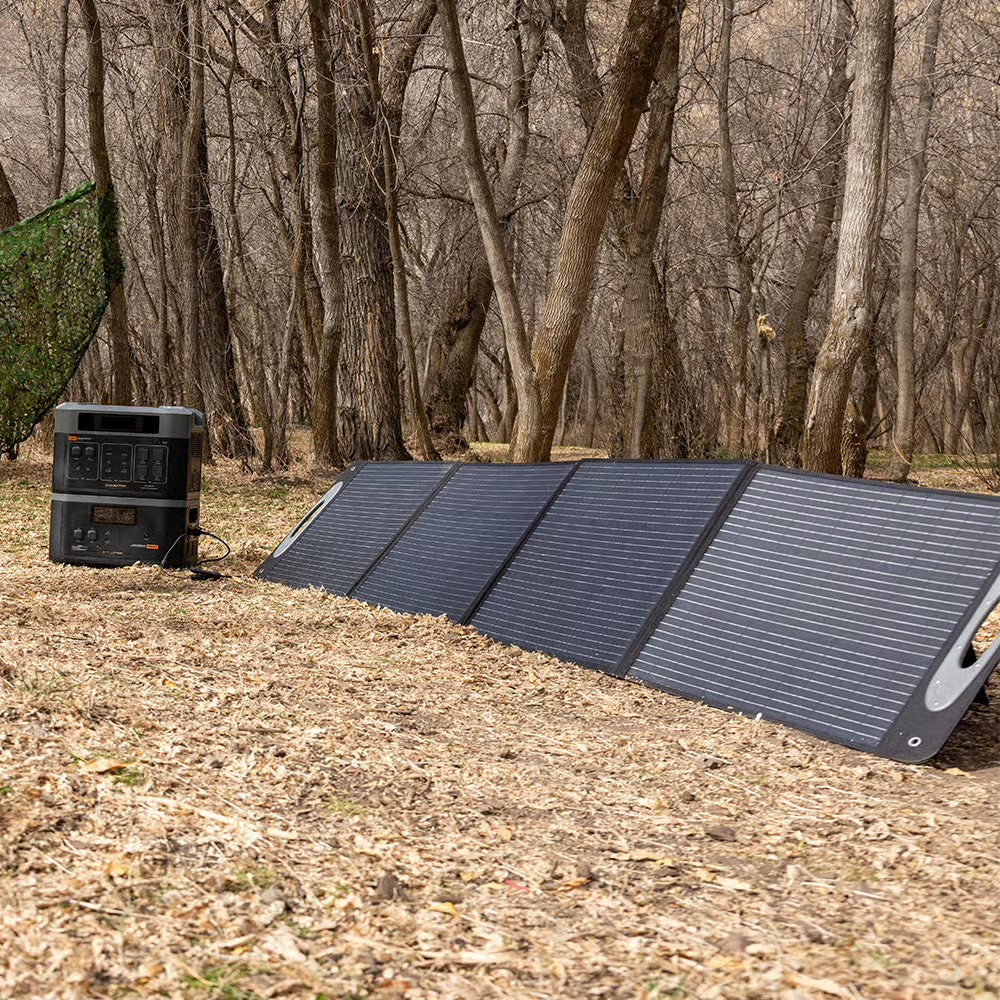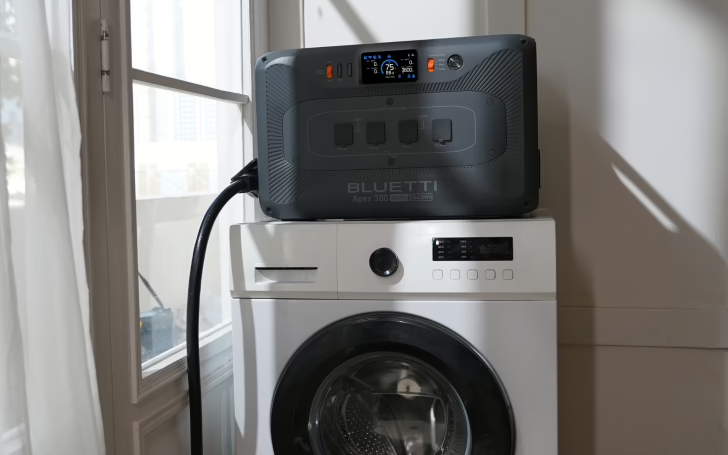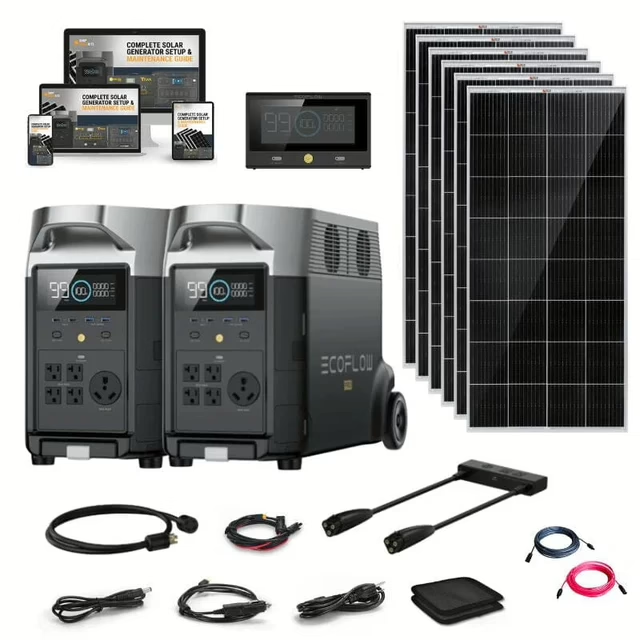portable solar generators

In today’s world, electricity is essential for daily life, powering everything from refrigerators and lights to communication devices and medical equipment. However, power outages caused by natural disasters, grid failures, or extreme weather can leave households vulnerable. A portable solar generator offers a reliable, eco-friendly backup power solution, ensuring your home stays functional during emergencies. This article explores how portable solar generators work, their benefits, and why they’re a game-changer for emergency preparedness.
Why Backup Power Matters in Emergencies
Power outages can disrupt essential services, leaving families without lighting, refrigeration, or the ability to charge devices. During events like hurricanes, blizzards, or wildfires, access to electricity can be critical for safety and comfort. A portable solar generator provides a sustainable, quiet, and portable power source, making it ideal for homeowners seeking peace of mind.

- Real-World Example: During Hurricane Ian in 2022, Florida residents used portable solar generators to power medical devices and communication tools, highlighting their value in disaster scenarios.
- Key Benefit: Unlike traditional gas generators, solar generators produce no emissions and operate quietly, making them suitable for indoor use and noise-sensitive environments.
What is a Portable Solar Generator?
A portable solar generator, often called a solar power station, is a compact device that harnesses sunlight to generate and store electricity. It converts stored DC power into AC power, enabling it to run household appliances and electronics. The system typically includes four main components:
- Solar Panels: Capture sunlight and convert it into direct current (DC) electricity using photovoltaic cells.
- Battery Bank: Stores the DC electricity for use when sunlight is unavailable, such as at night or during cloudy weather.
- Inverter: Converts stored DC power into alternating current (AC) power, compatible with most household devices.
- Charge Controller: Regulates the flow of electricity to prevent overcharging, ensuring battery longevity and system safety.
How It Works
- Setup: Place the solar panels in direct sunlight and connect them to the generator using provided cables.
- Energy Capture: The panels generate DC electricity, which the charge controller directs to the battery.
- Storage: The battery stores energy for on-demand use.
- Power Delivery: The inverter converts stored DC power into AC power, accessible via built-in outlets or USB ports.
For example, the EcoFlow Delta 2, with its 1800Wh capacity and 2200W peak output, can charge via solar panels in 3-6 hours, powering essentials like a refrigerator (100W) for up to 18 hours.
Benefits of Using a Portable Solar Generator
Portable solar generators offer numerous advantages over traditional gas-powered generators, making them a versatile and sustainable choice for emergency power and beyond. Solar Generator
Eco-Friendly and Cost-Effective
- Zero Emissions: Powered by renewable solar energy, these generators produce no harmful emissions, reducing your carbon footprint.
- Cost Savings: While the initial cost may be higher (e.g., $500-$2000 depending on capacity), solar generators eliminate fuel expenses and require minimal maintenance, saving money over time.
- Example: A gas generator might cost $50-$100 in fuel per month during frequent outages, whereas a solar generator like the EcoFlow Delta 2 relies solely on free sunlight.
Quiet Operation
Unlike gas generators, which can exceed 70dB, portable solar generators operate quietly, often at 50-55dB or less under high loads. This makes them ideal for residential areas or camping, where noise pollution is a concern.
- Comparison: The EcoFlow Delta 2, as noted in prior discussions, produces ~54dB under high load, comparable to a quiet conversation, ensuring minimal disturbance.
Versatility and Portability
- Wide Applications: Power essential appliances (e.g., refrigerators, CPAP machines) during outages or charge devices (phones, laptops) while camping.
- Portability: Compact designs, often with handles or wheels, make them easy to transport. For instance, the EcoFlow Delta 2 weighs ~27 lbs, suitable for RVing or emergency kits.
- Expandability: Many models, like the Delta 2, support additional battery modules for increased capacity, ideal for extended outages.
Reliability in Emergencies
Portable solar generators provide a dependable power source when the grid fails. They can power critical devices, such as:
- Medical Equipment: CPAP machines or oxygen concentrators for health needs.
- Communication: Charging phones or radios to stay connected.
- Lighting and Appliances: Keeping lights, fans, or small refrigerators running.
Real-World Applications
Portable solar generators are invaluable in various scenarios:
- Emergency Response: During disasters like earthquakes or floods, they power medical tents, communication hubs, or temporary shelters. For example, relief efforts in Puerto Rico post-Hurricane Maria relied on solar generators for off-grid power.
- Camping and RVing: Provide electricity for lights, cooking devices, or entertainment systems in remote locations.
- Remote Work: Support laptops and Wi-Fi routers for off-grid professionals, such as researchers or digital nomads.
- Home Backup: Ensure essential appliances stay operational during blackouts, maintaining comfort and safety.
Choosing the Right Portable Solar Generator
When selecting a portable solar generator, consider the following factors:

- Capacity: Measured in watt-hours (Wh), this determines how long the generator can power devices. For example, a 1000Wh generator can run a 100W appliance for 10 hours.
- Output Power: Measured in watts (W), this indicates the maximum load the generator can handle. The EcoFlow Delta 2’s 2200W peak output can power high-demand devices like microwaves.
- Charging Speed: Look for fast-charging options, such as the Delta 2’s X-Stream technology, which recharges in 80 minutes via AC or 3-6 hours via solar.
- Portability: Ensure the weight and size suit your needs, especially for outdoor use.
- Ports and Connectivity: Multiple AC, USB, and DC ports (as found in the Delta 2) offer flexibility for various devices.
For a detailed comparison, check out our guide to the best portable solar generators.
Maintenance and Optimization Tips
To maximize the performance and lifespan of your portable solar generator:
- Regular Cleaning: Clean solar panels to remove dust or debris, ensuring optimal sunlight absorption.
- Proper Storage: Store the battery in a cool, dry place to prevent degradation.
- Firmware Updates: Check for manufacturer updates to improve efficiency, as recommended for devices like the EcoFlow Delta 2.
- Avoid Overloading: Operate within the generator’s capacity to prevent damage and ensure quiet operation.
Conclusion
Portable solar generators are a reliable, eco-friendly, and versatile solution for powering your home during emergencies. By harnessing solar energy to convert stored DC power into AC power, they provide clean electricity without the noise, emissions, or fuel costs of traditional generators. Whether for disaster preparedness, camping, or remote work, devices like the EcoFlow Delta 2 offer high capacity, fast charging, and quiet operation, making them a smart investment for modern households. Stay prepared and sustainable with a portable solar generator tailored to your needs.
Stay Connected
Stay informed on the latest trends and tips for maximizing your portable solar generator for camping, RVing, emergencies, or remote work. Follow us at Latest Portable Power for expert advice and updates.

